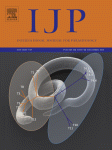Ver ítem
- xmlui.general.dspace_homeCentros Regionales y EEAsCentro Regional Santa FeEEA RafaelaArtículos científicosxmlui.ArtifactBrowser.ItemViewer.trail
- Inicio
- Centros Regionales y EEAs
- Centro Regional Santa Fe
- EEA Rafaela
- Artículos científicos
- Ver ítem
Divergent environmental preferences and areas of sympatry of tick species in the Amblyomma cajennense complex (Ixodidae)
Resumen
Four species of Neotropical ticks, Amblyomma mixtum, Amblyomma cajennense, Amblyomma tonelliae and Amblyomma sculptum (formerly included in the catch-all name A. cajennense), have an allopatric distribution in much of their range, with areas of parapatry for at least two of them. We inferred the abiotic niches of these organisms using coefficients of a harmonic regression of the temperature and the Normalized Difference Vegetation Index (NDVI, reflecting
[ver mas...]
Four species of Neotropical ticks, Amblyomma mixtum, Amblyomma cajennense, Amblyomma tonelliae and Amblyomma sculptum (formerly included in the catch-all name A. cajennense), have an allopatric distribution in much of their range, with areas of parapatry for at least two of them. We inferred the abiotic niches of these organisms using coefficients of a harmonic regression of the temperature and the Normalized Difference Vegetation Index (NDVI, reflecting plant stress) from remotely sensed data from MODIS satellites with 0.05° spatial resolution. Combinations of coefficients describing the phenology of these two variables pointed to divergent niche preferences, compatible with previous events of vicariance among the species. Amblyomma cajennense has been recorded in areas with small variations in temperature and NDVI. The remaining species were recorded in areas with large variations. The maximum environmental niche overlap was ∼73.6% between A. mixtum and A. cajennense and 73.5% between A. tonelliae and A. sculptum. Projecting these inferences on the geographical space revealed probable areas of sympatry or parapatry between A. mixtum and A. cajennense or between A. tonelliae and A. sculptum, the latter of which was confirmed with field collections. The A. sculptum distribution overlaps with that of A. tonelliae in northern Argentina and Paraguay; parapatry occurs at one extreme of the conditions occupied by both species. Compared with areas of allopatry, sites with both species had consistently lower temperatures, except for 10–12 weeks during the summer, and higher NDVI values throughout the year. We hypothesise that the overlap between A. tonelliae and A. sculptum resulted from secondary contact between populations, with A. sculptum adapting to sites with high water availability to balance high summer temperatures. Additional surveys of the areas of spatial overlap among these species are necessary to elucidate the forces driving their evolution and their adaptation to the environment.
[Cerrar]

Autor
Estrada-Peña, Agustín;
Tarragona, Evelina Luisa;
Vesco, Umberto;
de Meneghi, Daniele;
Mastropaolo, Mariano;
Mangold, Atilio Jose;
Guglielmone, Alberto;
Nava, Santiago;
Fuente
International journal for parasitology 44 (14) : 1081-1089. (December 2014)
Fecha
2014-12
ISSN
0020-7519
1879-0135
1879-0135
Formato
pdf
Tipo de documento
artículo
Palabras Claves
Derechos de acceso
Restringido
 Excepto donde se diga explicitamente, este item se publica bajo la siguiente descripción: Creative Commons Attribution-NonCommercial-ShareAlike 2.5 Unported (CC BY-NC-SA 2.5)
Excepto donde se diga explicitamente, este item se publica bajo la siguiente descripción: Creative Commons Attribution-NonCommercial-ShareAlike 2.5 Unported (CC BY-NC-SA 2.5)

